I still remember the first time I saw Methoni Castle. Its ancient stones rose above the clear blue waters of the Ionian Sea, and the salty breeze mixed with the sound of gentle waves. It really felt like I was stepping into a living postcard. Methoni Castle stands out as one of Greece’s most impressive sea fortifications, where history and stunning coastal views come together in a way that’s hard to forget.
As I wandered the winding paths and massive stone walls, I kept picturing all the people who once guarded these ramparts. The Venetians built the castle in the 13th century, and it has watched over sailors and travelers for hundreds of years.
Every corner revealed something new. There’s always something for curious adventurers and photographers here.
If you’re after a travel experience that mixes dramatic scenery with deep history, Methoni Castle is a solid choice. My own journey through this fortress filled me with awe and inspiration.
I’m excited to share tips and must-see spots to help you get the most out of your visit.
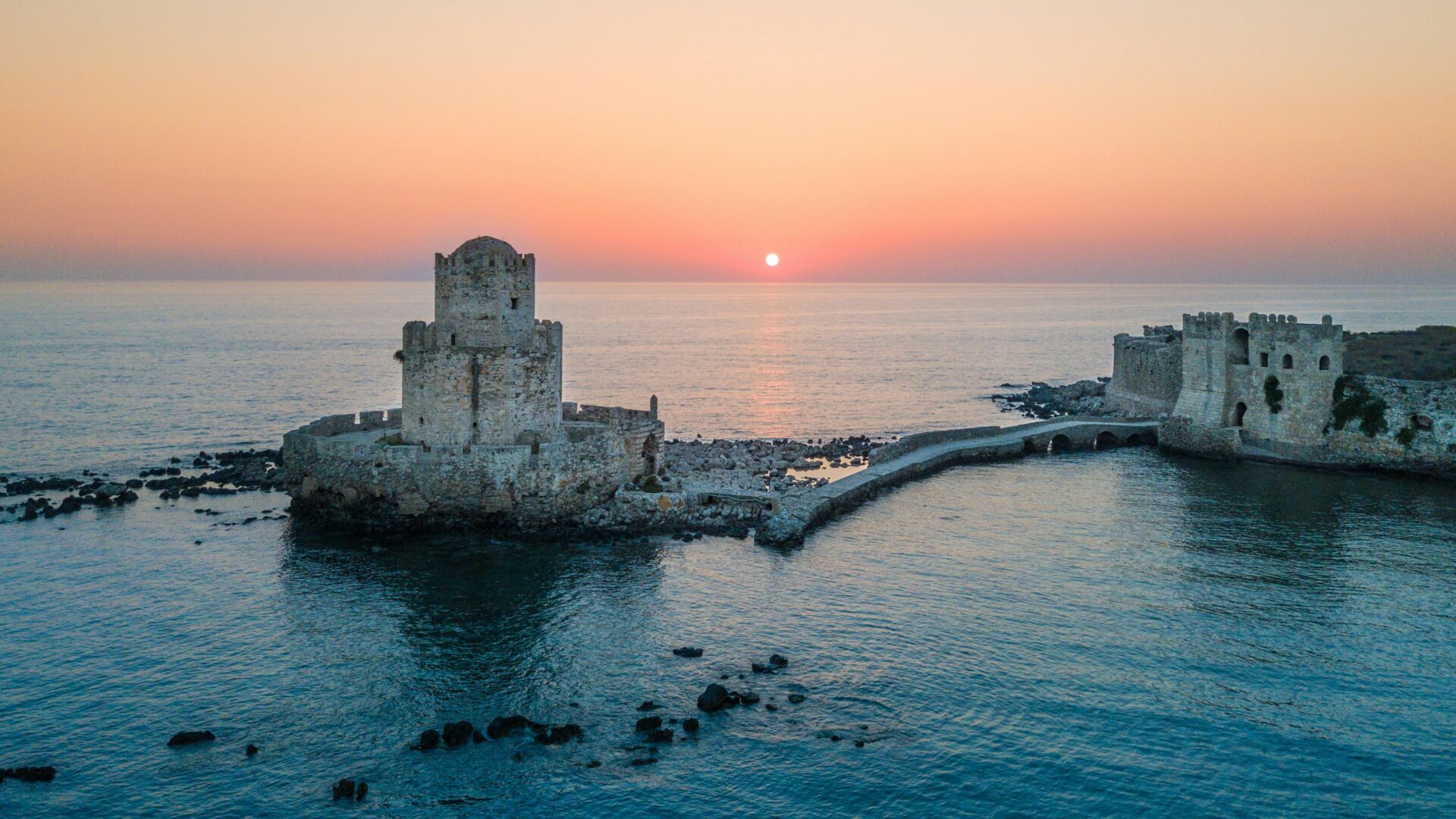
Discovering Methoni’s Castle: First Impressions
Winding roads, salty air, and old stone walls greeted me before I even glimpsed the sea. Methoni’s Castle isn’t just for history buffs—it’s a living memory anchored right where land meets water.
Arriving in Methoni
The drive to Methoni took me through the sun-baked Peloponnese. Olive groves rolled out on both sides, and I passed small, quiet villages.
Eventually, the rooftops of Methoni appeared in the distance. Parking near the center, I noticed how simple life felt here.
Everything moved at a slower pace, like time itself was stretching. With my bag slung over my shoulder, I strolled down leafy streets where locals greeted each other with nods and smiles.
The entrance to Methoni Castle is impossible to miss. Arcades frame the welcome, and curious cats curl up in the shade.
There’s a sense of anticipation before passing through its gates, the blue sea peeking out beyond stone towers.

The Sea-Washed Setting
Methoni Castle sits right on the edge of the Ionian Sea. Each breeze brings a mix of salt and history.
From the entrance, the ocean looks endless, sparkling below ancient walls. The fortress is almost surrounded by water.
Crumbling bastions stretch into the waves, and the castle’s moat fills with salty spray at high tide. Walking the ramparts, I watched fishing boats bob quietly.
The view from up high took my breath away—sea to the west, hills to the east. It’s obvious why this spot mattered so much.
The castle’s placement protected the coast and offered sailors shelter. Today, it’s the perfect place to stop, rest, and take in a view that has barely changed in centuries.

A Glimpse of History
This mighty fortress goes back to the 13th century. The Venetians built it after they took control of the area.
Thick stone walls, tall towers, and a massive gatehouse hint at old battles and sieges. Methoni and nearby Koroni were once called the “Eyes of Venice.”
These twin fortresses guarded sea routes and trade ships. Each stone seems worn smooth by both salt and time.
Inside the castle grounds, I wandered among abandoned homes and even a Turkish bath. The Bourtzi, a small fortress on its own islet, stands at the very tip, reached by a stone causeway.
It feels like stepping into another world—a place where every echo carries a story.
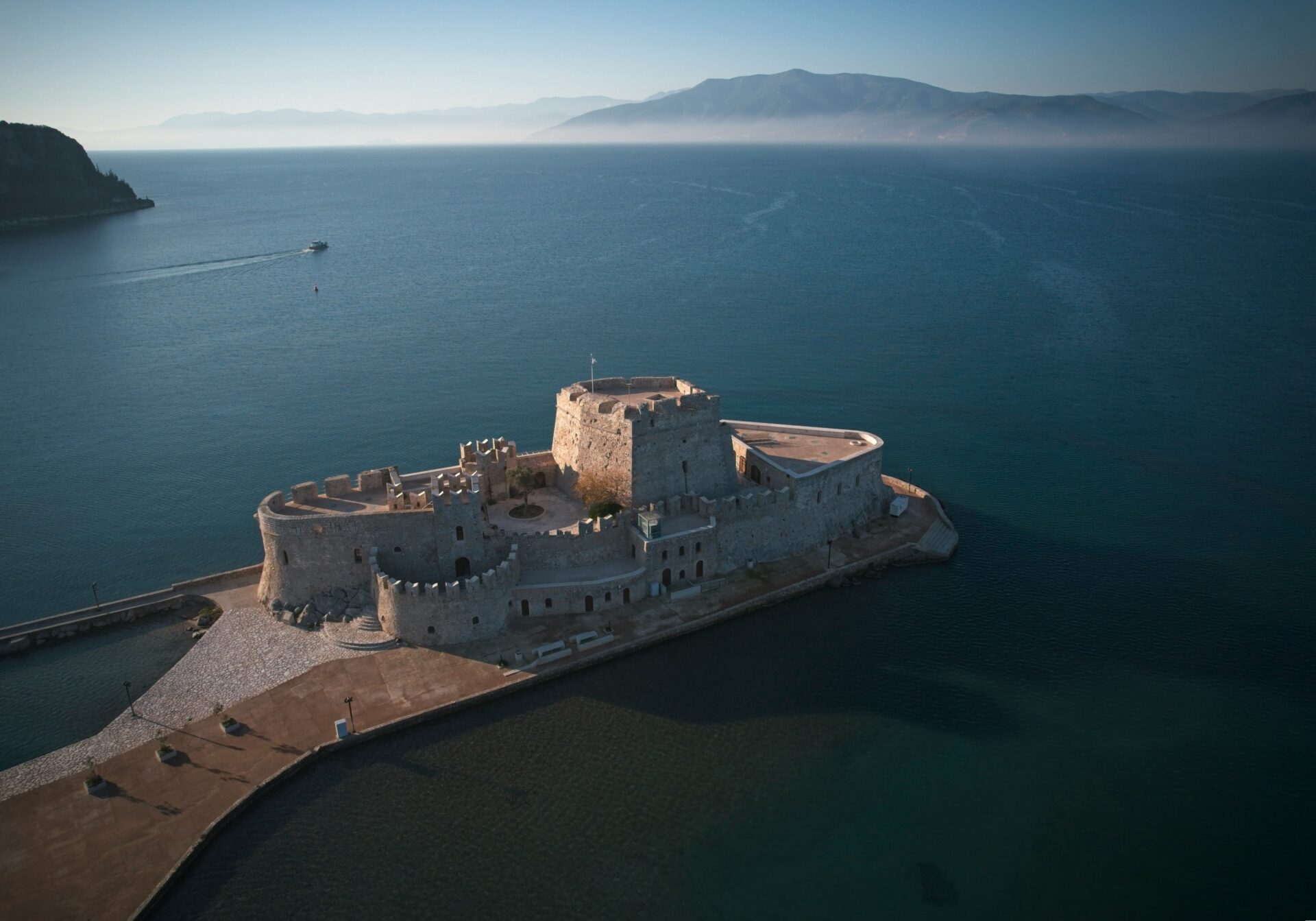
Unraveling the History of Methoni’s Iconic Fortress
Standing on the rocky coastline, Methoni Castle isn’t just a beautiful ruin. Its walls carry centuries of battles, alliances, and tales that make each stone feel alive.
Venetian Heritage and Medieval Mastery
Methoni Castle first caught my attention because of its grand Venetian design. The Venetians built it in 1209, marking the era when they ruled this stretch of Greece.
As I wandered through the arches and climbed the stone steps, I spotted classic Venetian touches—arched gateways, coats of arms, and sturdy fortifications.
The Venetians didn’t just build Methoni Castle for its looks. They used skillful medieval engineering to create thick walls, a towering gate, and a moat that separated the castle from the town.
Each feature had a practical use in defending against invaders.
One detail I loved is the striking stone bridge with its 14 arches, leading straight to the main entrance. Crumbling towers and narrow passageways made me imagine guards always on alert.
This blend of impressive design and strategic planning shows why Methoni stands out as a masterpiece of its time.
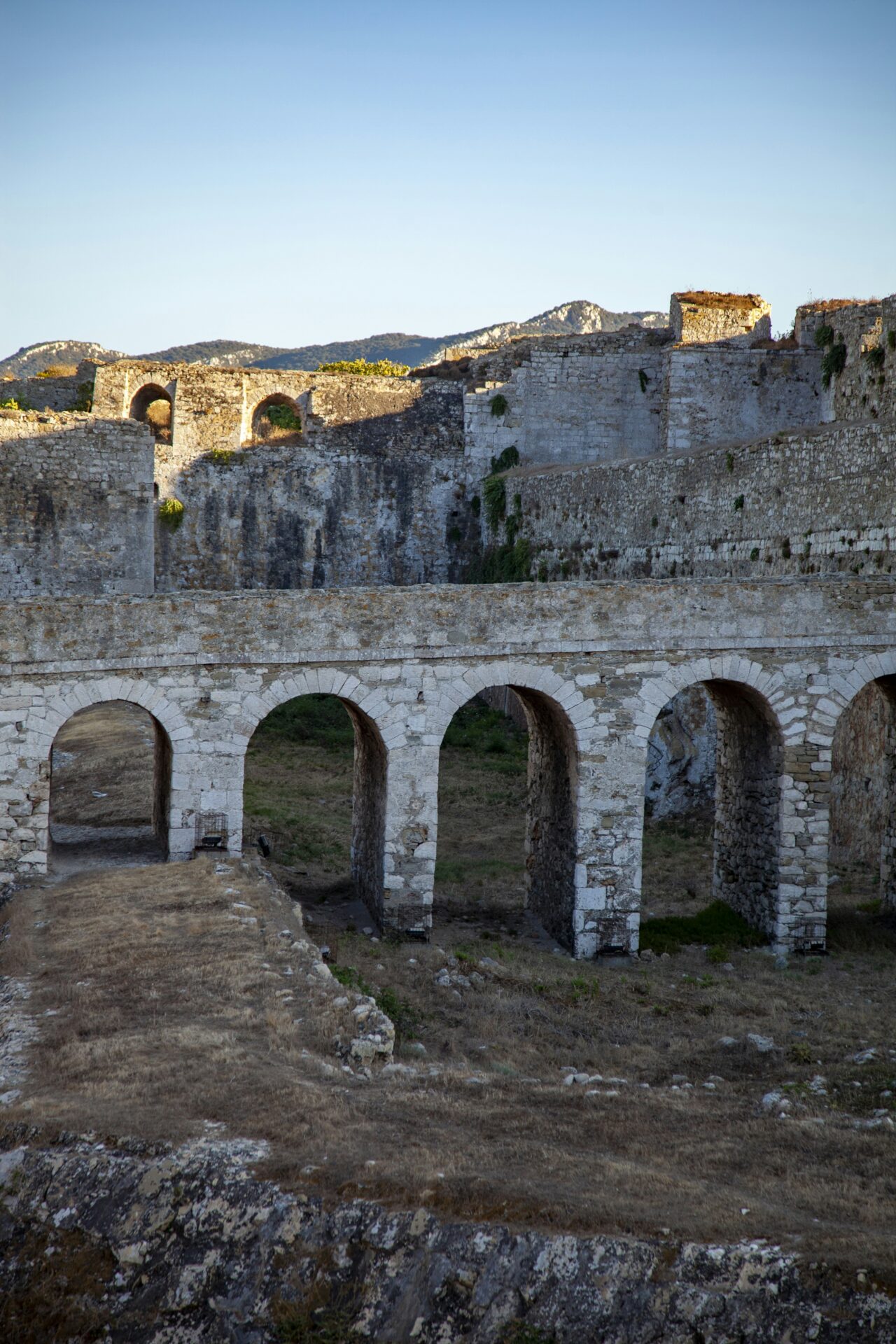
Strategic Importance Through the Ages
Methoni Castle’s prime spot on the southwest tip of the Peloponnese gave it a critical role in Mediterranean power struggles. The castle acted as a checkpoint for ships sailing between Venice and the eastern Mediterranean.
Its location drew the attention of empires, from the Byzantines to the Ottomans. Over centuries, Methoni’s harbor served traders, soldiers, and even pirates.
Each new conqueror left a mark, reinforcing walls or redesigning the main gate. During my visit, I pictured what it must have been like to arrive on a merchant ship, greeted by the impressive sea gate, with the castle rising above the waves.
Battles left scars on these walls, but the castle stood firm—an anchor point for rulers who wanted control over vital sea routes. Methoni’s strategic role made it famous far beyond Greece’s shores.
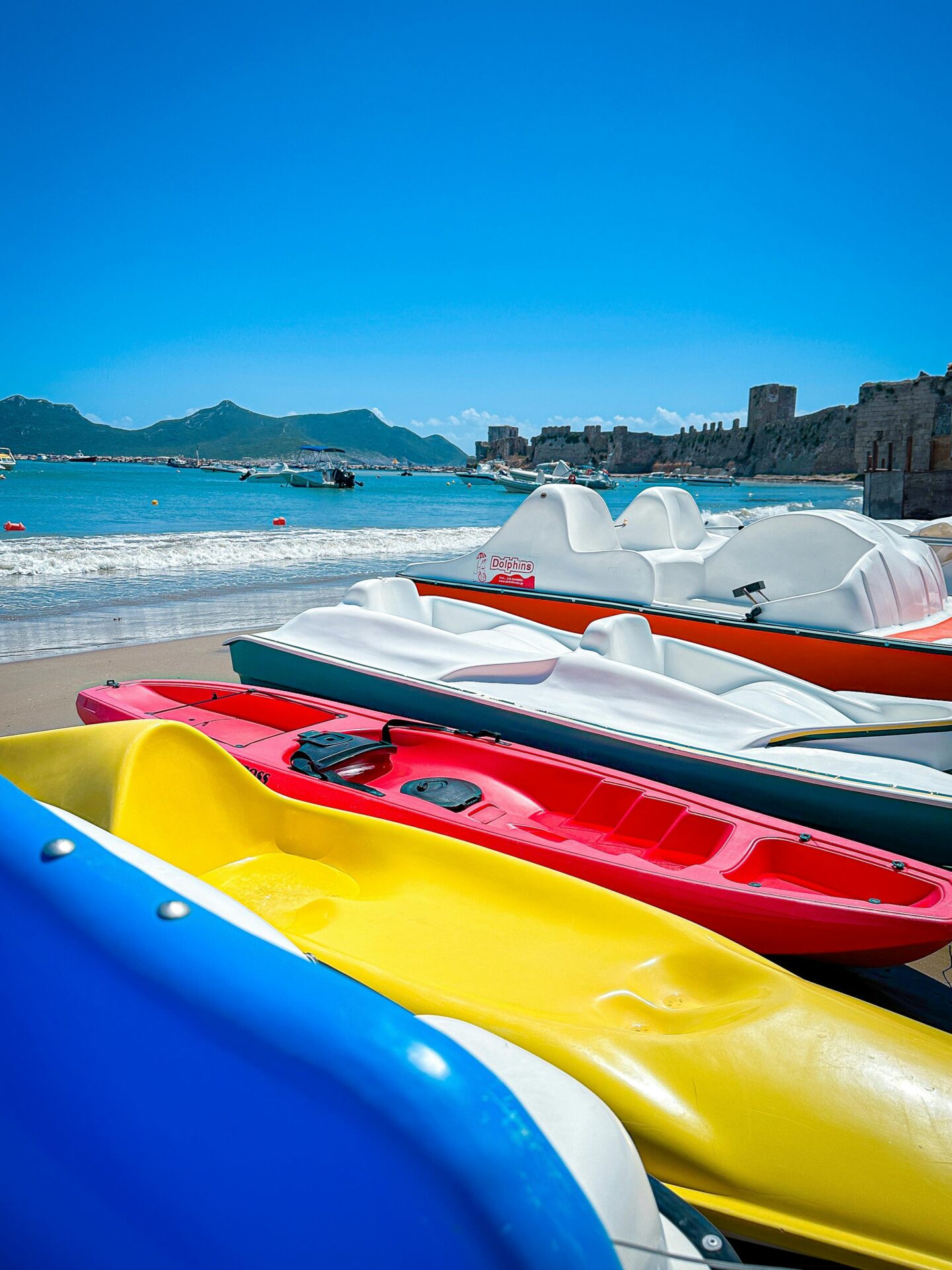
Legends, Lore, and Local Tales
Walking through Methoni Castle, I listened for echoes of old legends. Locals shared stories about lost treasure supposedly hidden within the thick walls, or tunnels running beneath the castle toward the sea.
Some even whisper about a Venetian ghost that appears during stormy nights. In nearby tavernas, elders talked of sieges and valiant knights.
A favorite tale is about “Bourtzi,” the small fortress on the islet at the castle’s tip. Some say prisoners stayed there, and their laments carried over the water on windy evenings.
Maybe many legends are impossible to prove, but they add mystery to the site. These stories greet every visitor, connecting today’s travelers with centuries of curious explorers before me.
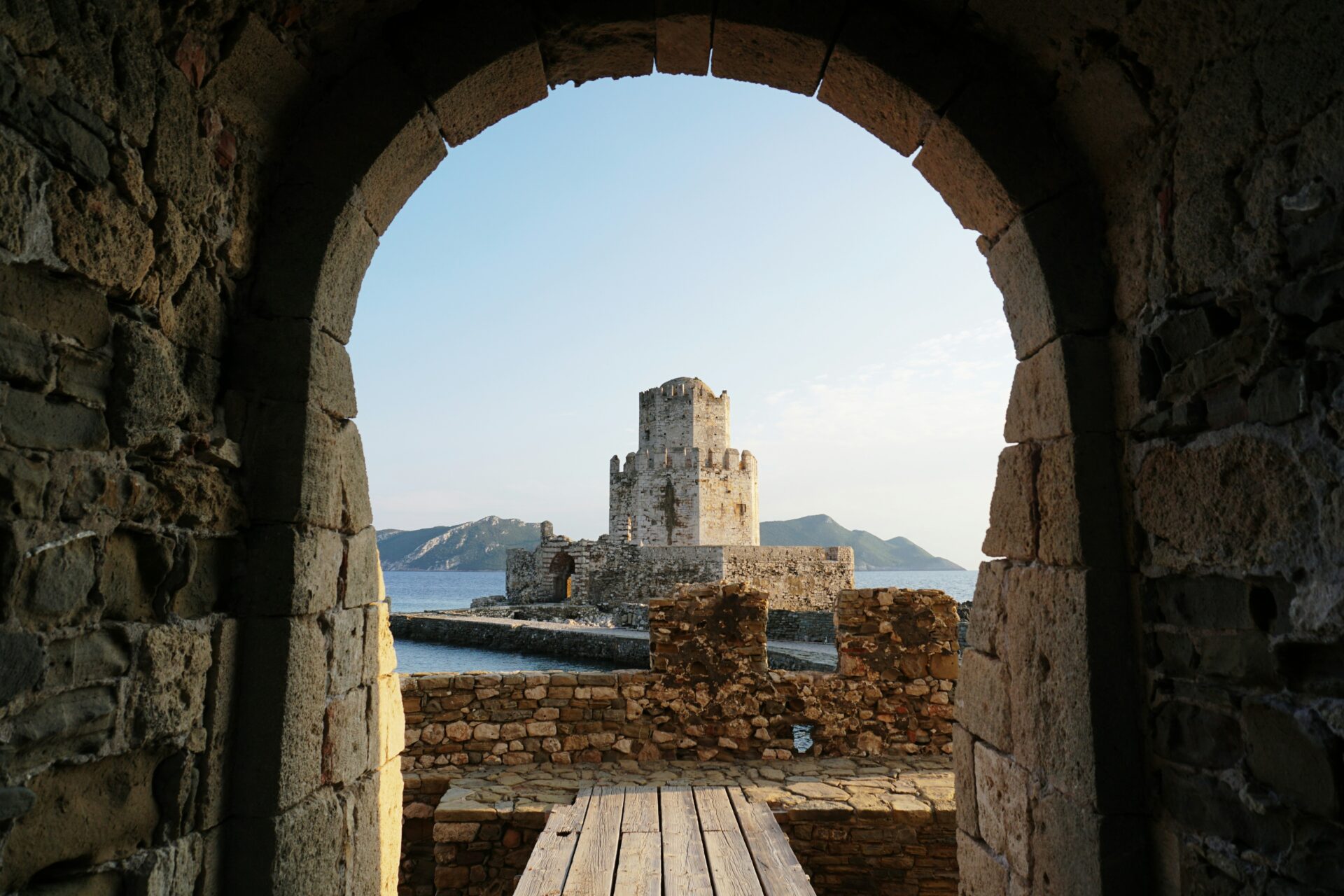
Exploring the Castle Grounds: Highlights & Hidden Gems
Every corner of Methoni Castle tells a story. Weathered stone walkways and sudden openings with sweeping sea views fill the grounds.
The castle is a mix of ancient engineering and natural beauty. Standout features made my adventure unforgettable.
Walking the Castle Walls
When I stepped onto the castle walls, I felt history right under my feet. These ramparts stretch across the peninsula, offering clear paths lined by rugged stone and patches of wildflowers in spring.
The route winds past watchtowers, and I found plenty of chances to pause and look out over the water or back towards Methoni village.
The sheer size of the walls surprised me. In some spots, I could walk side by side with friends, while in others I squeezed through narrow passages.
It’s easy to picture guards patrolling here long ago. Tip: Wear comfortable shoes—some stones are loose or uneven.
I often stopped to snap photos, especially near the arched gates and where the walls meet the sea.

The Bourtzi and Its Panoramic Views
At the far end of the castle, a narrow walkway leads to the Bourtzi—a round island fortress set apart from the main grounds. Crossing the stone causeway, I felt the breeze pick up and heard waves crashing against the rocks below.
Inside, the Bourtzi is simple but striking. Worn stone steps and slits for windows give it a stark beauty.
From the top, I enjoyed a full 360-degree view. The blue sweep of the Ionian Sea, crisp outlines of nearby islands, and the broad castle complex all unfolded below me.
I felt a deep sense of calm just standing there, listening to the wind. This spot is a favorite for photographers and anyone wanting a panoramic look at both land and sea.
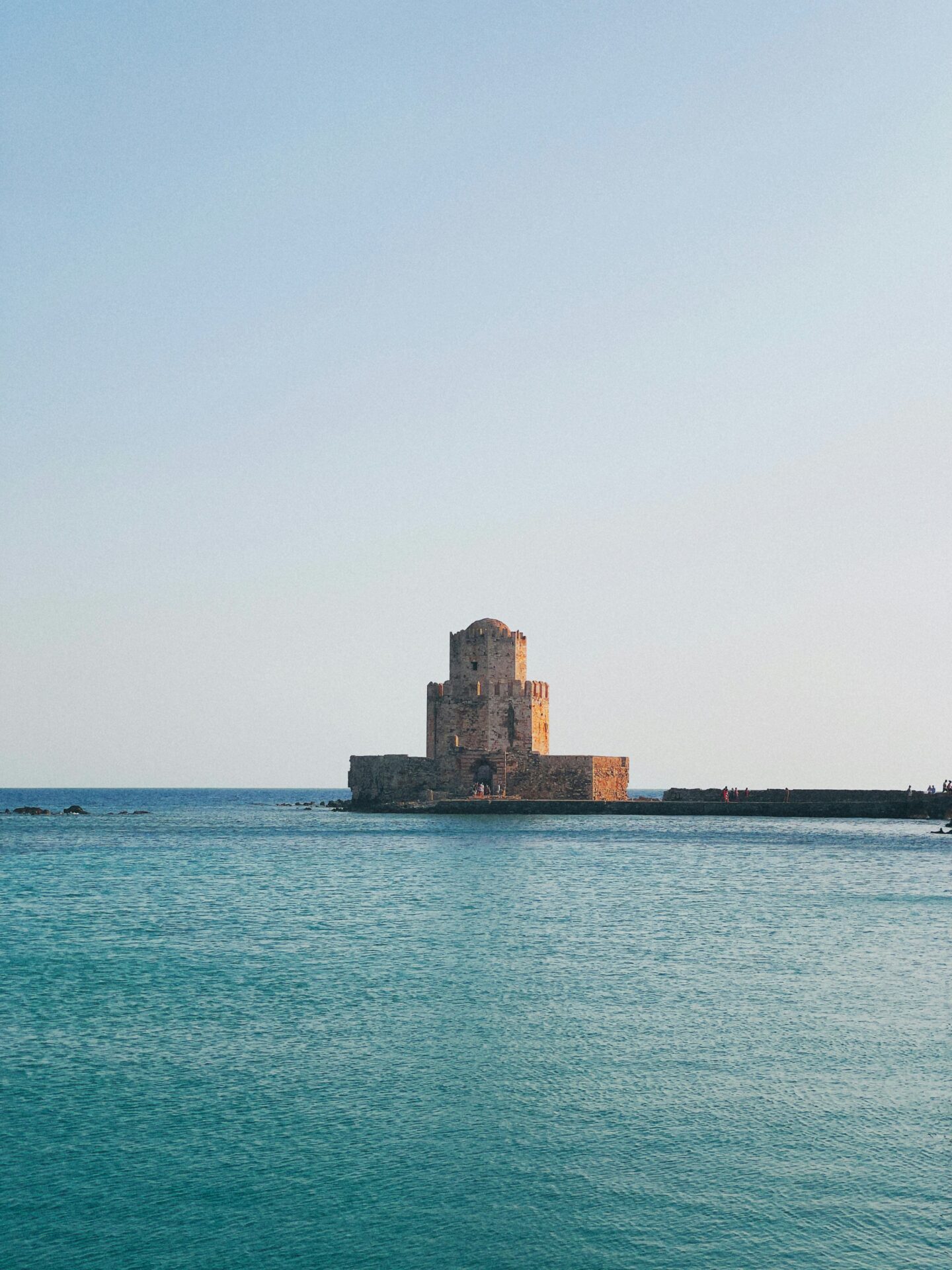
Secret Tunnels and Gatehouses
Not far from the thick castle gate, I found a narrow tunnel tucked behind old walls. Some tunnels are open for exploring, winding beneath the fortress and letting in shafts of sunlight here and there.
These hidden paths once let defenders move unseen. The main gatehouse, built during Venetian times, still shows rich stonework—arches above, heavy wooden doors below.
I admired faded carvings and sturdy iron fixtures. If you love discoveries, bring a flashlight to peek into darker corners.
Each gate and tunnel tells how the castle worked as both a home and a fortress, alive with secrets.
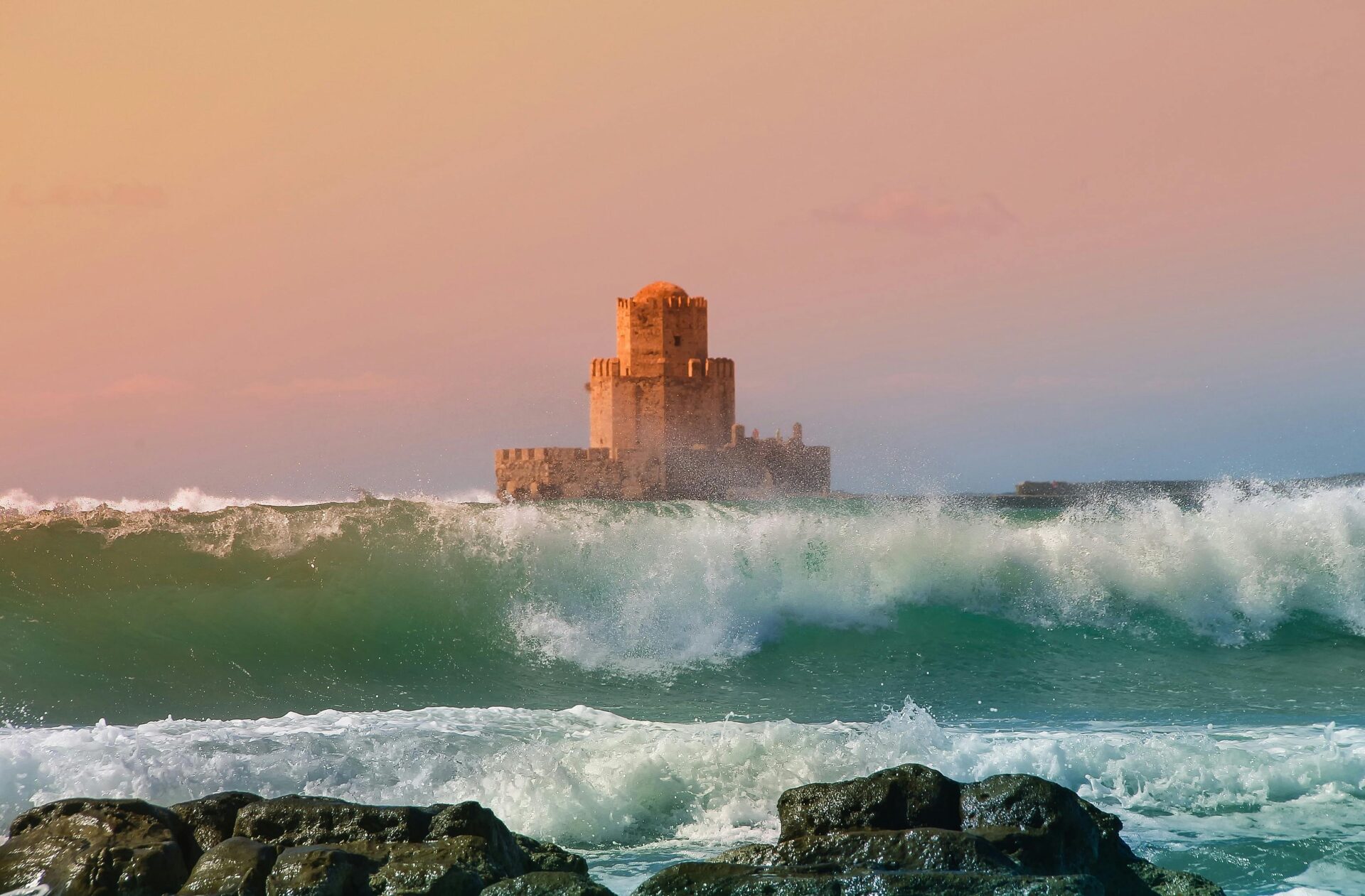
Vistas Over the Ionian Sea
At the southern edge of Methoni Castle, I faced a view that made me stop in my tracks. The Ionian Sea stretched wide, shifting in color from emerald to deep blue.
Sailboats slid across the horizon, sometimes breaking the stillness with a glint of white.
What you see from here:
| Direction | Sights Visible |
|---|---|
| South | Ionian Sea, distant horizon |
| East/West | Nearby coves, rolling hills |
| North | Town of Methoni, lush fields |
Late in the day, golden sunset light turned the walls warm and the sea almost silver. I sat on the stone ledge for a while, just soaking in the calm.
For anyone visiting, this view is worth every step.
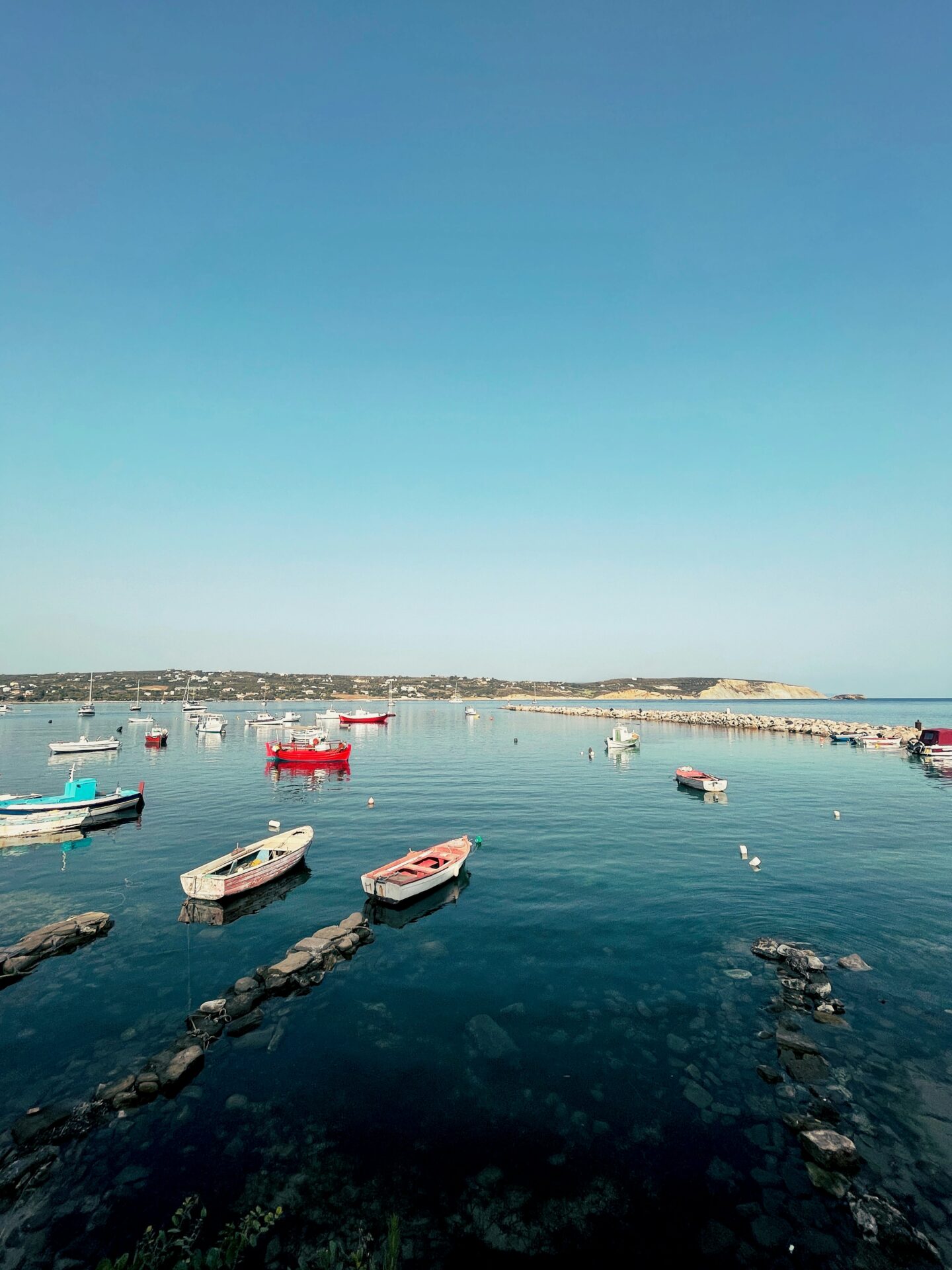
Practical Travel Tips for Visiting Methoni’s Castle
Planning a trip to Methoni Castle takes a little thought, especially if you want to make the most of your time. Here’s what I picked up—details on the best times to go, ticket costs, opening hours, and what to pack for the adventure.
Best Times to Explore and Avoiding Crowds
Methoni Castle can get busy, especially during peak summer months and weekends. I found that arriving early in the morning or later in the afternoon let me enjoy the peace and get better photos with fewer people around.
Local guides told me weekdays are quieter, especially outside of the July and August rush. Spring and fall bring comfortable temperatures and fewer crowds.
The warm breeze from the sea and the sound of waves make wandering the old walls especially enjoyable in these off-peak seasons. I always check local Greek holidays before I go, since special events can draw larger crowds.
If you want shade, visiting before midday helps avoid the strong midday sun.
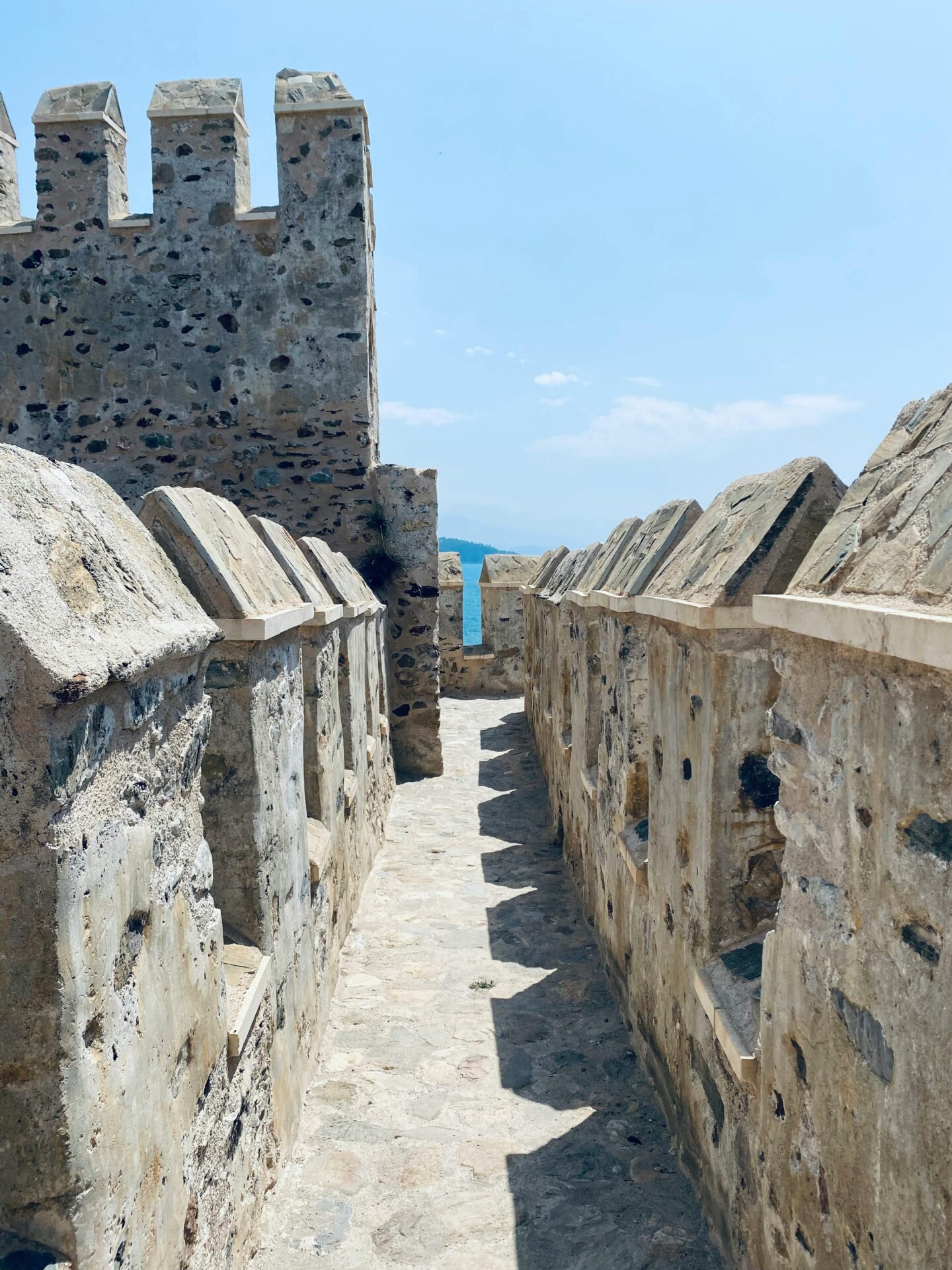
Tickets, Opening Hours, and Accessibility
Methoni Castle’s entrance fee is very affordable. Last time I visited, tickets cost about 2€ per adult.
Opening hours usually run from 8:30 a.m. to 3:30 p.m. in winter, but hours can be longer in summer. I always double-check on an official site or ask at local shops to confirm, since times may change.
There are no public toilets inside the castle grounds. The area isn’t wheelchair accessible—steep steps and uneven stone paths make things tricky for strollers or anyone with mobility issues.
I plan restroom breaks before entering and make sure my shoes can handle the cobblestone walks.
Quick Info Table
| Ticket Price | Winter Hours | Facilities | Accessibility |
|---|---|---|---|
| 2€ | 8:30–15:30 approx. | No toilets | Not wheelchair-accessible |
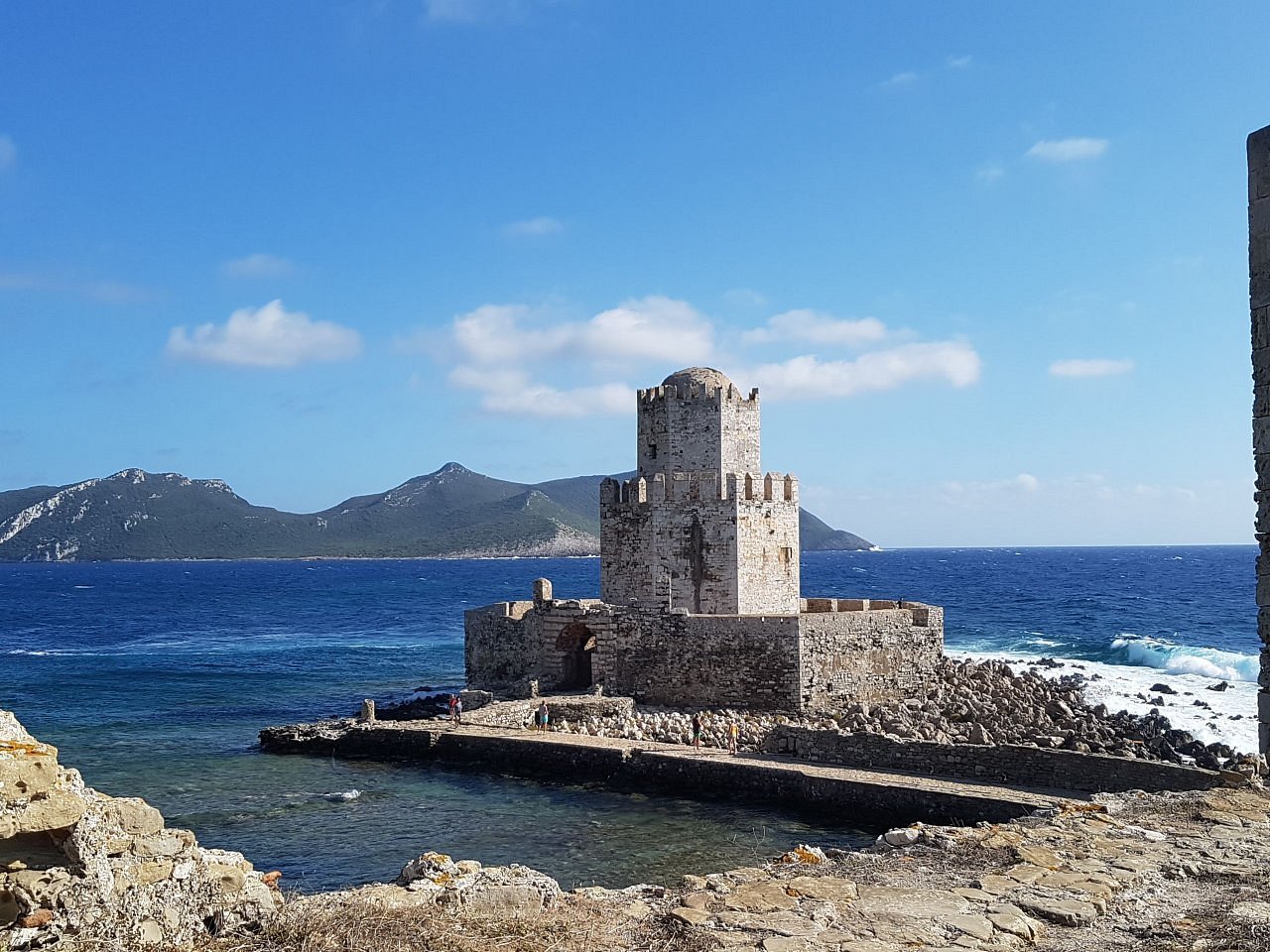
What to Bring and Wear
A visit to Methoni Castle means being out in the open, often with a steady sea breeze. I always pack a refillable water bottle, especially in warmer weather.
Since there are no toilets or food stalls inside, a light snack in my bag is smart too. Comfortable shoes are a must—the ground is uneven and there’s plenty of walking.
I wear a hat and sunscreen since shade is limited. Sunglasses help with the bright reflections off the stone walls and sea.
Sometimes I bring a small camera or just my phone, but a portable charger is essential if I plan to spend several hours exploring and taking photos.
Even in cooler seasons, a lightweight jacket or shawl helps with the wind. If I want to swim at the nearby beaches after, I pack a swimsuit and towel.
Methoni’s castle is both a historic site and a gateway to the sea, so being prepared makes the visit so much more enjoyable.

Beyond the Castle: Local Culture and Nearby Sights
Methoni offers so much more than its famous castle walls. I found myself charmed by the village, drawn in by seaside meals, and tempted by sandy stretches and secret coves just a few minutes away.
Charming Methoni Village
When I wandered through Methoni village, it felt like I’d stepped into a quieter, simpler time. Whitewashed houses with blue shutters hugged the narrow streets.
Locals greeted me with warm smiles, especially near the shaded main square. Old men gathered there, sipping coffee and chatting.
Each morning, I’d stop by the small bakery on the corner for fresh bread and golden spanakopita. Tiny shops displayed handmade crafts—woven baskets, painted ceramics, and delicate lace.
Families gathered around outdoor tables, swapping stories as the sun slipped lower. The whole place just felt real and inviting.
The weekly market quickly became a highlight for me. Farmers sold tomatoes, olives, and fragrant herbs.
Greek music drifted from open windows and mingled with the sounds of daily life. It was easy to linger; honestly, I never felt rushed.
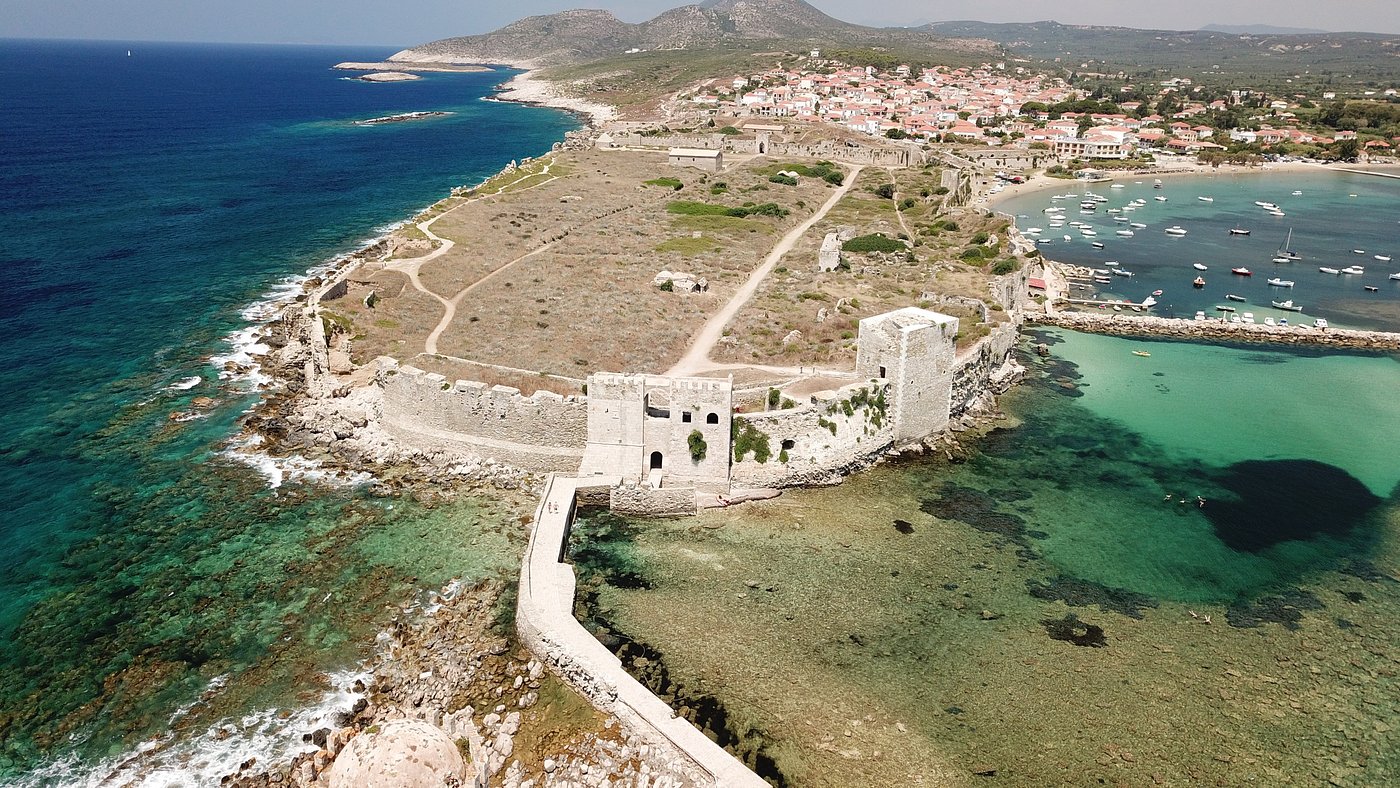
Seaside Dining and Regional Flavors
Tavernas in Methoni perch right on the water’s edge. I ate outdoors with the castle behind me and listened to waves gently lap against the fishing boats.
Most menus offered locally caught seafood—grilled sardines, octopus, and calamari tasted especially fresh here. I ordered kakavia (Greek fisherman’s stew) and paired it with a chilled glass of local white wine.
For me, the atmosphere mattered just as much as the food. The staff chatted like I was a family friend and slid over a bottle of homemade olive oil for dipping crusty bread.
Dishes often featured Kalamata olives and feta straight from nearby Messinia. If you go, save room for baklava or orange pie—honestly, I couldn’t pick a favorite between the two.
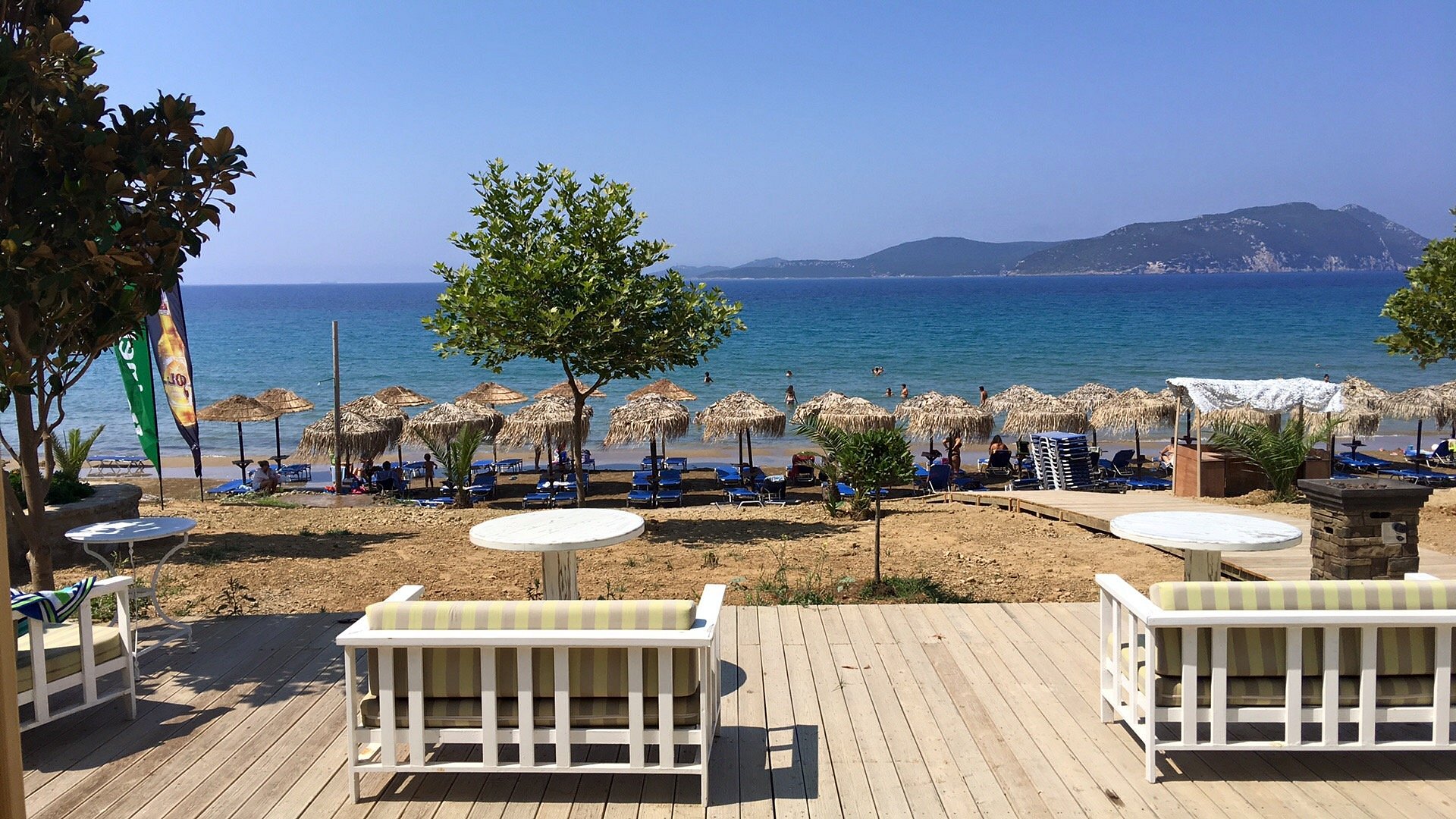
Nearby Beaches and Natural Escapes
Methoni’s beaches really catch your eye with their clear water and golden sand. The main beach runs right along the castle walls—honestly, it’s perfect if you just want to float around or watch local kids play soccer in the soft sand.
I used to wander down there early in the morning. Fishermen would already be at work, hauling in their nets, and the sea would pick up these streaks of pink from the sunrise.
A short drive took me to a few quiet coves, like Lampes Beach. I found it’s a great spot for snorkeling or just escaping the crowds for a bit.
Voidokilia Beach, shaped like a horseshoe, sits north of Methoni. I’d say it’s worth the drive. You can hike up the dunes and catch views of ancient ruins tucked into the landscape.
If you’re into wildlife, Gialova Lagoon is the place to be. You’ll spot migratory birds there, and the wetlands feel a world away from the busy coast.
It’s easy to rent a kayak or a paddleboard along the shore. I kept finding new stretches of coastline or little hidden spots—each one seemed better than the last.

